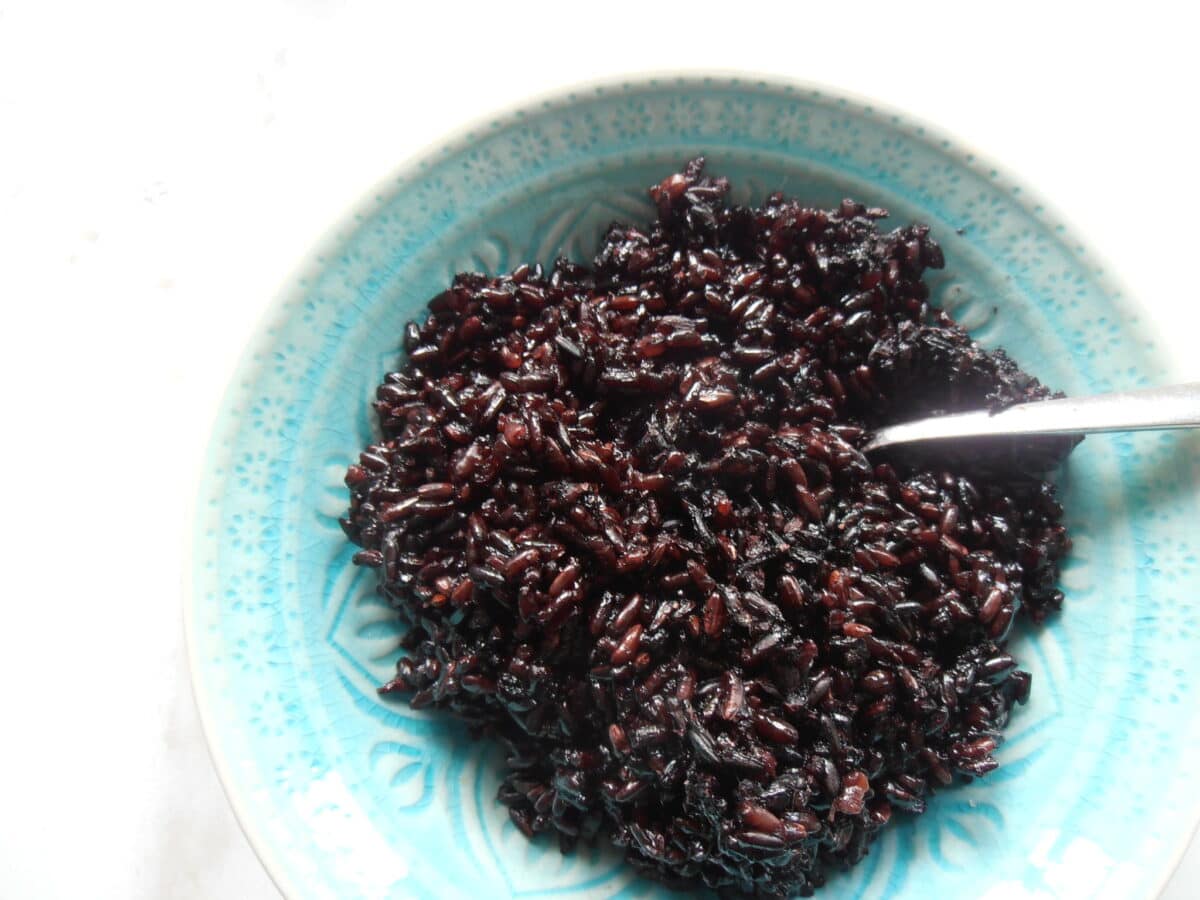Having a pleasant taste and being full of nutrients, in ancient China black rice was consumed only by noblemen, who forbade their consumption by ordinary people. He was called ‘forbidden rice’, ‘longevity rice’ or ‘immortal food’. Recent studies prove that the old Chinese were not too far from the truth because it has been discovered that this type of rice has multiple benefits for health, prevention and treatment of serious conditions such as heart disease, cancer, diabetes, hypertension, asthma or Alzheimer’s disease.
What nutrients does it contain?
It is rich in antioxidants called anthocyanins, preventing free radical formation, slowing down aging and preventing disease. “A spoonful of black rice contains more anthocyanin antioxidants than the same amount of blueberries, but much less sugar and more vitamin E and fiber than these. If blueberries are effective in maintaining good health, why not this rice too? “Zhimin Xu, a professor at the Louisiana University of the United States, said in a press release.
Also contains other important minerals for health, such as iron, calcium, copper, zinc, selenium but also B vitamins (B1 and B2 above all). Contains proteins and an important amount of essential amino acids.
Due to its properties, black rice is a natural antioxidant and anti-inflammatory, and the extract helps prevent the formation of arteriosclerotic plaques in the heart’s arteries.
Moreover, regularly consumed, it prevents heart attack, reduces the level of lipids and triglycerides in the body, the latter being risk factors for stroke and heart disease.
Black rice extract also helps reduce cholesterol. Consuming a portion every day could lead to strengthening the bone and muscle system, energizing the body and prolonging the body’s youth.
At the same time, helps to improve memory and fluidize blood circulation. It is recommended to include it in the diet of those who suffer from diabetes.
What do we choose: brown or black version?
Brown rice with a minimum fat content is a good provider of protein, vitamin E and B complex vitamins, but contains low amounts of vitamins like C, A or B12. In terms of antioxidants, black rice surpasses brown rice. When processing the latter, the dark layer is removed, the rice grain remaining almost white, while the black type is marketed offset.
When can I enter it into the baby’s diet?
Black rice can be introduced into a diversified diet after the age of 8 months. Because it does not contain gluten, is very well tolerated by babies. However, our recommendation is to consult your baby’s pediatrician before introducing black rice into a diversified diet and adhering to the 4-day rule.
How is it prepared?
Black rice is black when it is natural, but it gets a purple color when cooked. It has a pleasant smell and it can be boiled, prepared in porridge, or it can be used as a base – in the flour version – for desserts.
Indications for boiling: After moisturizing (preferably 12 hours) boil (1 part rice to 3 parts water) for 20 minutes, but it is good to check to avoid overproduction because you risk you lose important nutrients.
For desserts, rice is generally used in combination with coconut milk, sugar (for older children) and water to form a sweet pudding. It can also be eaten at breakfast. If you prepare it together with other foods, keep in mind that strong pigments color the other ingredients.
Even if you are not a milled rice consumer, you will fall in love with this range, with visible health benefits.
Sources:
http://www.livestrong.com/article/155649-nutrients-in-steamed-black-rice/
http://www.dailymail.co.uk/health/article-1306356/Black-rice-new-cancer-fighting-superfood-claim-scientists.html
http://edition.cnn.com/2010/HEALTH/08/26/black.rice.new.brown/index.html
Photo source: http://flic.kr/p/bxn4GV
